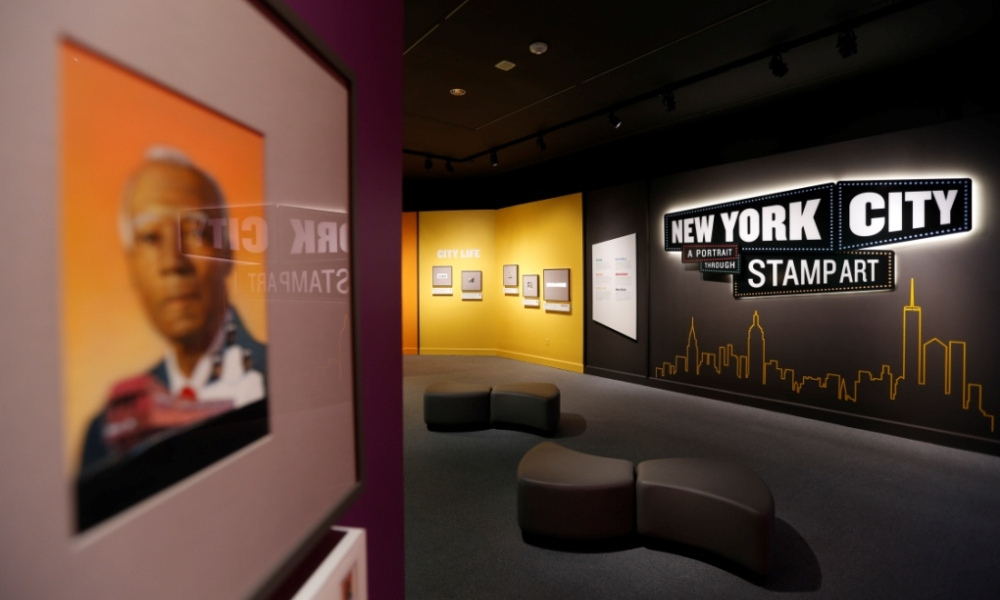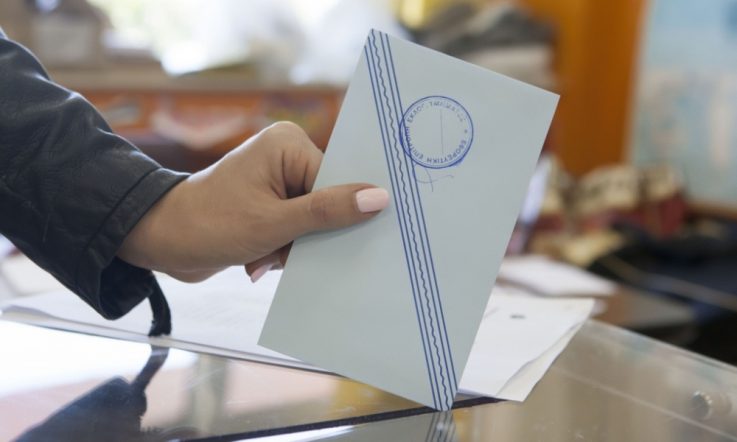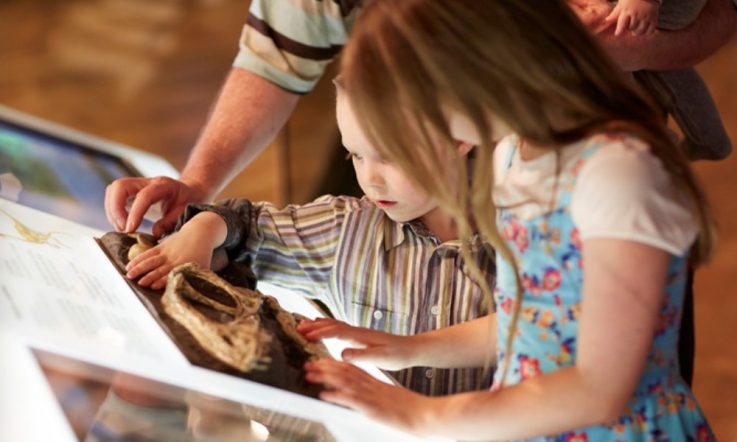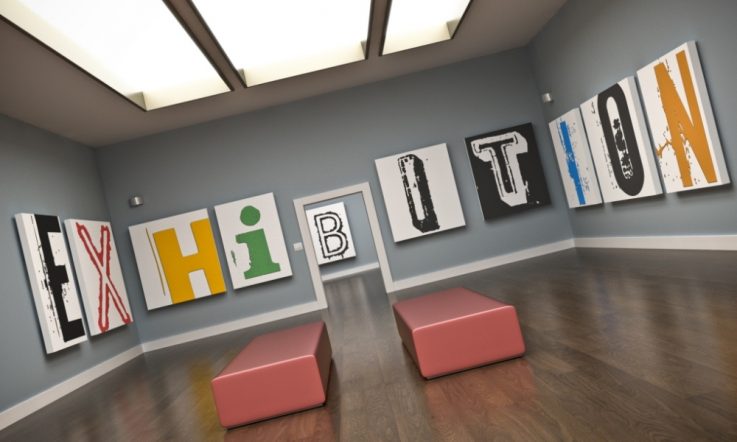Increasingly, schools are staging end of unit or term exhibitions of student work across a range of subjects. They're a great way to celebrate student achievements, to create authentic tasks with work produced for a real audience, and to connect with parents and the community.
In a two-part Q&A Teacher goes straight to the top for expert tips on how to make the most of your event. Kara Blond is Director of Exhibitions at the world-famous Smithsonian National Museum of Natural History. Her role includes overseeing exhibition development, design and production. Today, Blond shares advice on choosing a space inside or outside school, planning your event and making it an interactive experience for the audience, including parents.
When choosing an exhibition space in school, what things should educators consider to make the most of what they have?
Ideally, you'd find a spot where inviting people to stop and spend some time won't interrupt the flow of traffic. Where are the underutilised spaces in your school? Is the library an option? What about a computer lab? Can you use an outdoor courtyard? Could you transform the backs of the bathroom doors? What about the high spaces in the gym?
Use the constraints of a school's tight spaces or long hallways to your benefit: find a focal point with an amazing object, image or art piece that draws people's attention. Hang things from the ceiling out of reach that can attract with gentle movement; use floor graphics to draw people through narrow spaces; try gobo light projections [where cut out images or patterns are slotted in front of a light projector or lamp] to transform ordinary walls into moving, colourful messages.
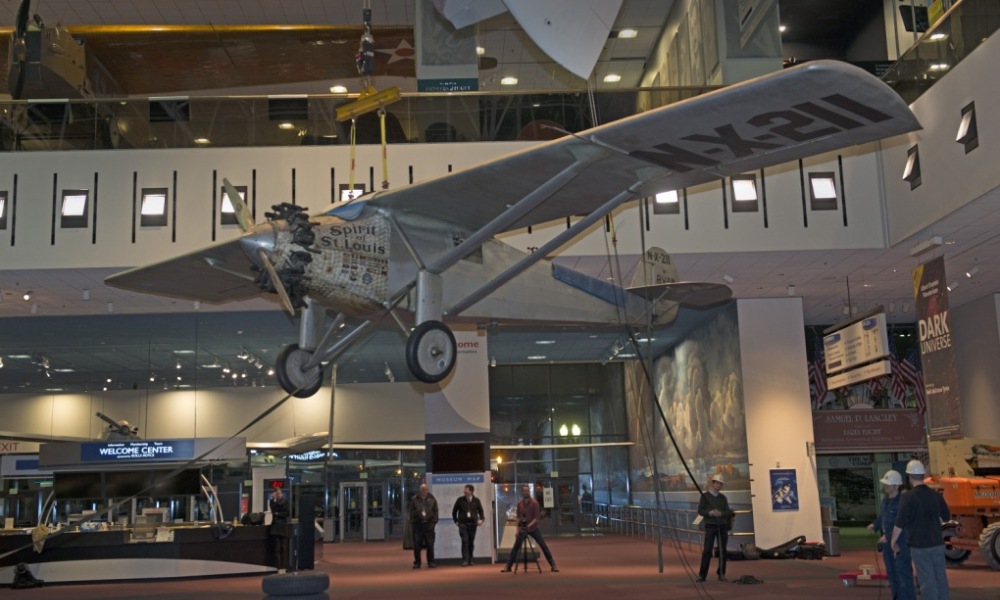
While you may not have as much space as the Smithsonian, there are many ways that you can utilise the constraints of your spaces to your own benefit. Hanging objects from the ceiling can attract eyes. Image courtesy of the Smithsonian National Museum of Natural History. Photograph is of Smithsonian's National Air and Space Museum and was taken by Mark Avino.
Other considerations include:
- Lighting - will you have adequate light to see objects, too much light for films, or low enough light to create dramatic effects to set the mood or spotlight features?
- Access - can the right audiences get to your space?
- Sound - if you want people to hear audio from a speaker or with a video, for example, carpeted spaces contain sound better than hard floor surfaces. Hard surfaces also mean loud spaces. Using partitions covered in fabric can help keep the space quieter and more contemplative.
- Viewing angles - do you want a surprise reveal? Can visitors get close enough or far enough away from the work to have the proper impact?
You could even reach out to a local public library, town hall or restaurant to borrow their wall space.
Regarding logistics, if you use temporary partitions, make sure they can be reused in different configurations for future shows. Where will they be stored? Can they be used for other purposes? Build as little as feasible that's customised to your particular exhibition.
Assuming you have a space, what about planning the event? What tips do you have for deciding what goes where and, importantly, how to display it?
Start by identifying your most important audience and setting a clear goal for your exhibition. Who do you want to visit and what do you want them to walk away with? Is it a particular grade of students? Parents? Teachers, administrators or school board members? Neighbours?
And then, ideally, design your exhibition with that audience and goal in mind. What would draw your target audience into the space? What design language, vocabulary and experiences would speak to them most directly?
Interviews can help you figure out what your audience is looking for from their experience. Make sure to meet both their goals and yours – do they need to be able to move through the exhibit quickly? Have a space for seating? Have someone to guide their visit?
Prototyping is another great tool to use to assess whether your audience is connecting with your message. Build one or two key elements out of paper or cardboard and invite a few sample audience members to interact with them. Or, share your label language with future visitors. Watch their reaction. Listen to what they say. Are they confused? Are they getting your message? Revise your prototypes and test again.
Using first-person voices is another compelling interpretive technique. Have the artists or photographers write their own labels in their own words — tell how they developed the piece or build a story around the object. Visitors will be much more interested to hear their unique perspective.
Blond says schools might want to consider having an ‘open gallery' and a special exhibit and that volunteer guides (or docents) can help connect the two.
Have your ‘docents' start conversations, pose questions, do brief talks, bring objects to touch or manipulate, or start games in the gallery.
In terms of design, think about how many elements can comfortably fit in your chosen space – you want to be able to highlight special objects without overwhelming your audience. Locate key information at the right height for your target visitors. And make sure to think about accessibility for audiences with learning or physical disabilities. Consider providing different points of entry (even at different heights) for different types of audiences.
Pick the most important information to highlight, and leave the rest out. Too many words will turn off most audiences, so choose them carefully to meet your goals. Then, make them stand out clearly. Ensure your text has significant contrast from the background, is large enough to read from a distance, and that key words are emphasised.
We know that visitors ping-pong around exhibits to see what they're interested in, so plan for that. Reinforce messages in more than one place. Exhibition visitors act in different ways – some streak through, others stroll and pick up bits of detail along the way, and others dive in deeply and read every word on the wall. Think about all three categories as you design. Get your point across quickly, but provide levels of detail for those who want it.
How can teachers ensure their school exhibition is an interactive experience for the audience?
Invite your audiences to talk back to your exhibition, providing them with a two-way conversation that makes your message even ‘stickier'. You could leave Post-It notes or index cards for visitors to post messages on a display board at the centre or exit to your show. Or, you might provide a table and materials for visitors to create their own artwork and a space to display it.
Post social media ‘hashtags' associated with particular pieces where visitors can share their opinions and see others' thoughts. Some successful exhibitions even have had key components selected by visitors – voted on in advance or as part of the gallery.
Audiences can also vote with their dollars – clear jars or containers with slots in the top can enable visitors to vote with their dollars (or tokens or tickets) for their favourite categories or to support certain causes. Games that invite visitors to interact with each other – even people they don't know – can create a community in your exhibition that may lead to great conversations later for families.
Stay tuned: Tomorrow, in the second part of this special Q&A, Smithsonian Director of Exhibitions Kara Blond will be talking about the skills needed to stage and manage an exhibition, and how teachers can involve all students by assigning them these different roles.
If you've staged a school exhibition and want to share your own tips with the Teacher community get in touch via Twitter (@teacheracer) or Facebook (https://www.facebook.com/teacherACER).
Think about your own subject area or, if you’re a primary teacher, a unit you’re doing next term. Is there an opportunity to stage an exhibition of student work?
What will the goal of your exhibition be? And who will be your most important audience?
